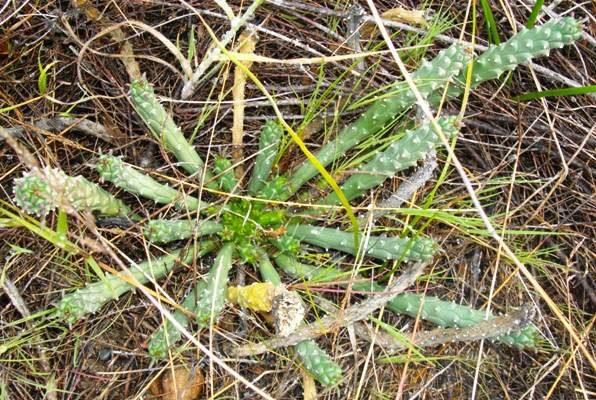Euphorbia caput-medusae

Author: Ivan Lätti
Photographer: Ivan Lätti
Euphorbia caput-medusae, commonly Medusa's head, is a succulent growing many finger-like stems in a rosette arrangement from a short, underground caudex. The stems may be straight and erect or decumbent and curving up. When the latter shape occurs, the resemblance to writhing serpents warrants the comparison to the head of the mythical Medusa fitted with snakes, the caput-medusae of the specific name. In Afrikaans the plant is called vingerpol (finger tuft), a name shared with several other Euphorbia species. The plant is low-growing, but may reach a diameter of 1 m.
These plants grow from close to Cape Town and near Cape Point on the Cape Peninsula northwards through the Western Cape and the Northern Cape to the Gariep River and in Namibia, as well as eastwards to Mossel Bay.
The habitat is coastal sand flats and rocky hills, also desert conditions. The species is not considered threatened in habitat early in the twenty first century.
Its closeness to Cape town made this Euphorbia one of the earliest to become known in botany and horticulture (Frandsen, 2017; Smith, et al, 2017; Bond and Goldblatt, 1984; iNaturalist; www.plantzafrica.com; www.redlist.sanbi.org).

